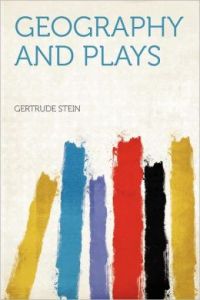 The most memorable and enjoyable production I saw while going through my master’s program in playwriting was a staging of Dr. Faustus Lights the Lights, directed by the talented Carrie Klewin Lawrence. Every moment of this production was engaging for me, even though I wasn’t at all sure I was understanding it. Later, when I spoke with an actress from the show, I said, “I loved it. It was funny. (pause.) Was it supposed to be funny?” she said, “I don’t know.”
The most memorable and enjoyable production I saw while going through my master’s program in playwriting was a staging of Dr. Faustus Lights the Lights, directed by the talented Carrie Klewin Lawrence. Every moment of this production was engaging for me, even though I wasn’t at all sure I was understanding it. Later, when I spoke with an actress from the show, I said, “I loved it. It was funny. (pause.) Was it supposed to be funny?” she said, “I don’t know.”
Wikipedia says this about Dr. Faustus: “The structure of action in Doctor Faustus Lights the Lights does not resemble that which is traditionally thought to constitute a play. The progressive development of a coherent plot that unfolds through the interaction between a configuration of figures is, however, just discernible.” “Does not resemble a play” and “coherent plot just discernible” (or indiscernible) are good descriptors for all Gertrude Stein plays that I’ve read so far. They are far more poetry than play, essentially unstageable (and arguably not meant to be staged), and also, fantastic. This week, in an effort to expand my understanding of Stein the dramatist, I read a series of short “plays” from Geography and Plays:
“What Happened: A Five Act Play” – Five acts? Yes, but under 10 minutes in production length. “What Happened” raises the pretty obvious question, “What did just happen?” I have no idea. I’ve often said I wanted to stage an adaptation of Lyn Hejinian’s narrative poem My Life, and I think that would turn out somewhat similarly; this play is essentially a poetry recitation, arguably but not clearly from a few different perspectives. It is not clear if the character designations (One, Two, Three, Four, and Five) indicate which of five actors should speak or how many of the actors should speak, and while Act II has multiple character indicators, they read, “Three,” “The same three,” and “The same three,” so can we gather this is delivered as a monologue? A “trialogue?” The play deals with common objects and states, giving them nonliteral definitions and explanations. (“A blame what is a blame, a blame is what arises and cautions each one to be calm and an ocean and a masterpiece.”) While opaque, it is evocative, and I ultimately found it enjoyable, though if it had gone on for any longer than the length of a long poem I might not have.
“White Wines: Three Acts” – This play, delivered by a group of “Witnesses,” I found more impenetrable than the others. Its style is pretty similar to that of “What Happened,” but even denser. Again, lots of emphasis on objects, but I think I’d need to spend more time with this one to really understand Stein’s purpose.
“Do Let Us Go Away” – This piece was structured more like – which is not to say like – a traditional play. The character designations are more clear, and it’s apparent that the setting is a household and/or community of households. There is a repeating theme of the taking of houses at certain seasons and the effect this has on the community. Lines like “The proprietor came and took the almonds. We said, do not take the grapes, we will not give you the key,” suggest household power dynamics, ownership vs. occupancy conflicts, and other points of tension. Despite the more detailed character designations, it isn’t really always clear who is talking, and certainly the relationships between characters are obscure. However, like Dr. Faustus, this seems to me like a dramatic piece that could clearly be clarified through performance, and not merely like a poem in semi-dramatic form.
“For the Country Entirely: A Play in Letters” – This play is, as the subtitle suggests, presented in letters, but it isn’t always clear where an individual letter begins or ends. Character designations are absent except as articulated within the letters. Some parts of the play – scenes or sub-scenes – might be interesting presented as long monologues, as if the characters are having imaginary conversations with themselves, rehearsing for future confrontations as we all do. “Come again soon” is a repeating phrase, and little snippets of gossip and criticism emerge from the letters, but almost every section is comprised of little bits of ongoing conversations, just as letters are but with less framing. This piece has really interesting staging possibilities embedded in it, and multiple possibilities for unearthing meaning(s), but without the benefit of character designations or breaks, the preparation and/or rehearsal process would be incredibly labor-intensive for such a short piece. That is not necessarily a bad thing, of course.